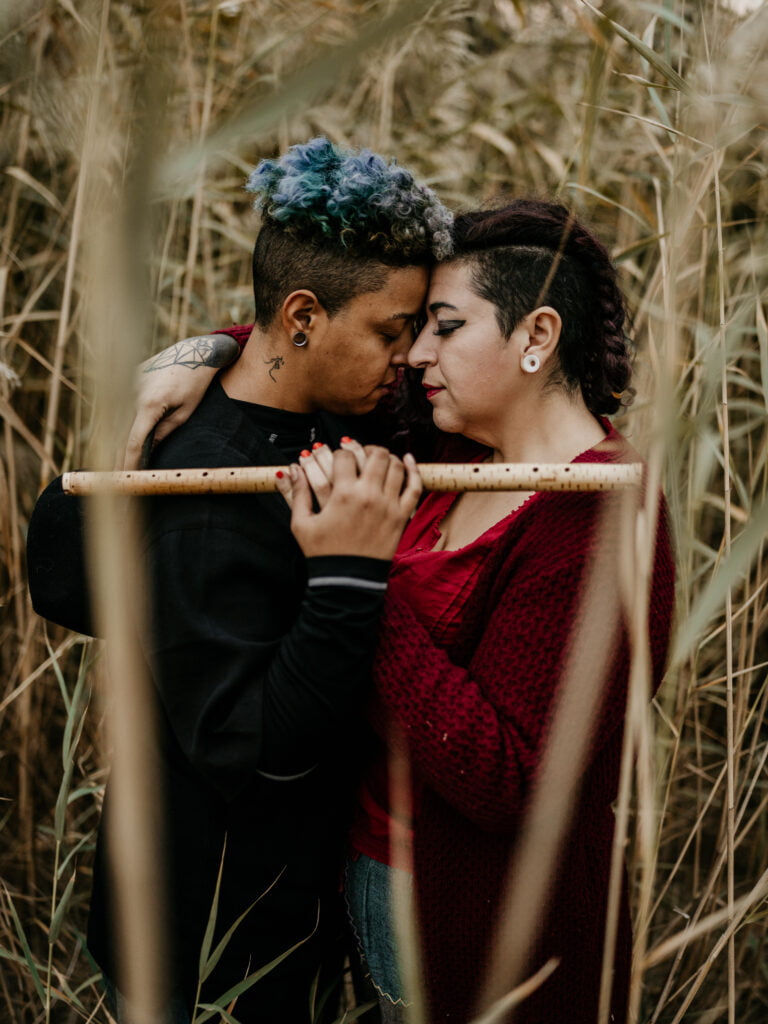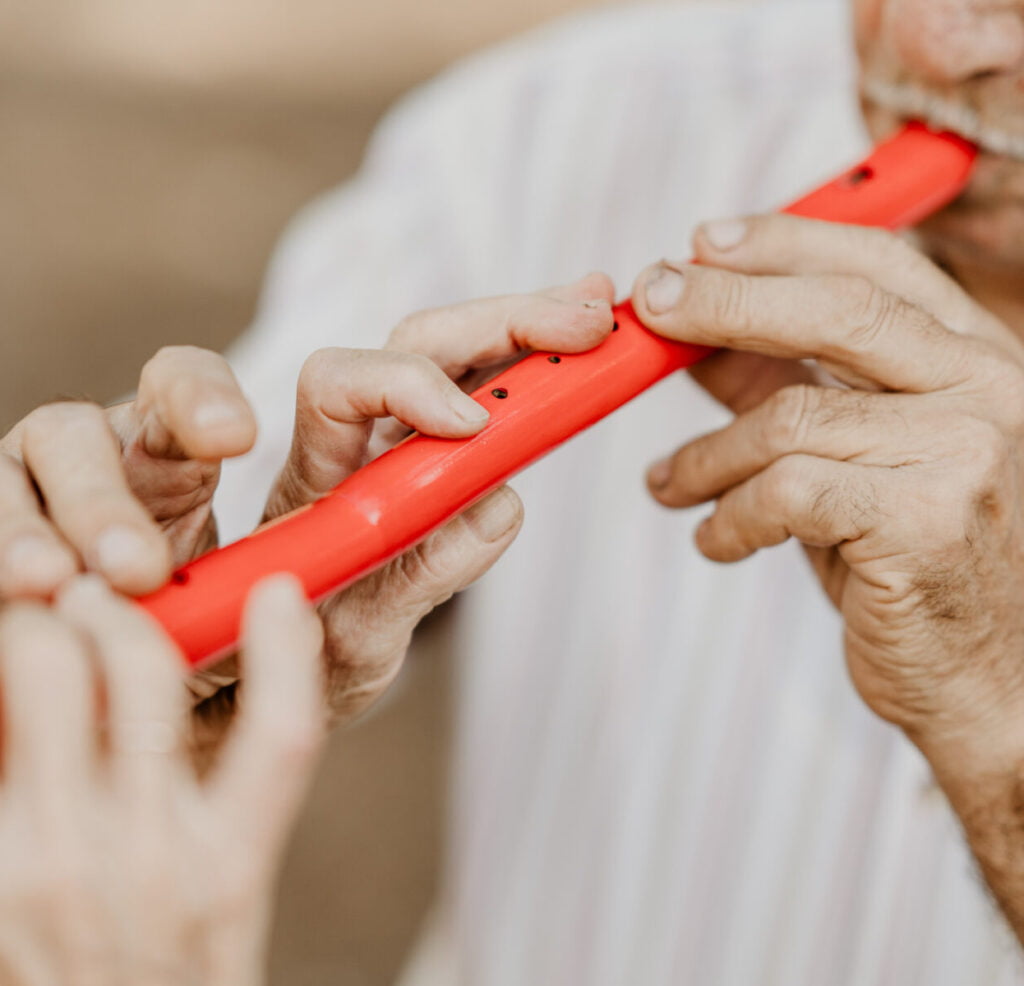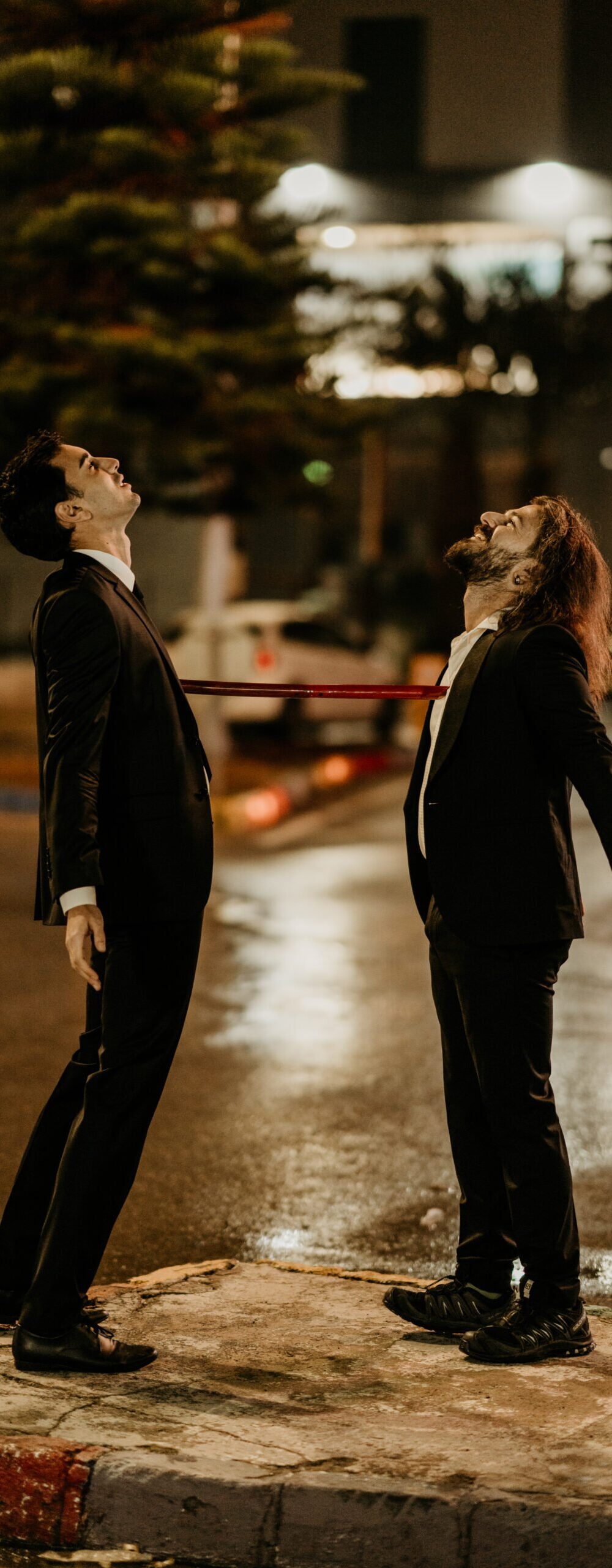ABOUT YENA`S FLUTE
In March, 2015, I learned how to make flutes from a travelling Ukranian couple who had a great interest in making flutes out of reeds. Due to my own interest in wind instruments, I began making various flutes at home as a hobby. That year, while producing my first batch, I discovered a technique that would allow two people to blow into one reed and play it as though it were two different flutes, either standing side by side, or across from each other.
I make flutes from reeds because my personal journey of flute-making started that way. However, flutes can be made from any material. I explore various locations in Cyprus, waiting for the right season to find reeds suitable for production. The ideal months for selecting these suitable reeds are usually February and March. After gathering the reeds and leaving them to dry for at least a year, I open holes in them in a way that two people can harmoniously and simultaneously play. As each flute is unique to a person or couple, I paint every flute with a different design, and put them up for sale in pouches which are also custom-made.
HOW TO PLAY YENA`S FLUTE?
When first learning to play, people should find their most comfortable position to hold the flute. The more you practice, the more this position becomes a habit and settles. When the moment comes to play the flute together, when you meet in a common area and communicate and share your life practices, you will try to hold the flute and play it in the way that you are used to. The first problem that could arise is when the space occupied by one of the players leaves no room for the other and traps them in silence. The only thing to do is to realise that this problem is taking place and find a middle ground to open space for the other person. The risk then, is over-conceding. If we do not know the flexibility of our limits needed to make our presence acknowledged, we over-concede and move away from the mouth piece in order to make room for the other person. In this instance, we lose our own voice and essentially give our own selfness into someone else’s hands.
In this first phase needed to play the flute, after everything has settled into balance, couples often fall into error and immediately begin to play. In other words, players believe that they are ready to start a relationship. Actually, even if they are playing the same note due to a probability of them blowing into the mouth piece at different angles or with different pressure, they can achieve very different sounds. This situation is equal to the difficulty of speaking in different languages, even if couples claim that they are playing the same note! Essentially, players are saying the same thing but with a different point of view. The first thing to do in this situation is for both sides to balance the tone of the note by changing the blowing pressure or the angle at which they are blowing. As such, the players are creating a starting base without words. When we align our tones and speak the same language we are finally ready to play together.
A new journey begins from here on out. Couples may now choose whether they prefer to look each other in the eye while playing or if they prefer to play side by side. Once the style of playing is determined, couples may then choose a design to comfortably convey their own definition of love.
The next step is determining which scale best expresses your communication and definition of love. Couples who prefer to play side by side may also decide how far the mouth holes will be from one another. If players are in a romantic relationship they have the chance to choose a flute whose mouth holes are closer to feel chemistry and physical attraction. On the other hand familiy members or friends may choose the flutes that the mouth holes are distant. For couples to find their own sounds, each flute has its own number of notes and scale. Cheerful major scales or somber minor scales can be chosen. Once the scale is chosen, the amount of notes is looked at. On some flutes, there may be only two notes on one side, while the other side has six or more. For a couple who chooses such a flute, the one with less notes defines love more simply while the other side defines it with more ups and downs, and has a feeling that requires more words for it to be defined. Other flutes have an equal amount of notes on each side for couples to try and complete each other. These flutes have notes on either side that the other does not have. Due to the almost infinite possibility of scales that can be produced, couples may find the design which best suits their definition of love and style of relationship.




